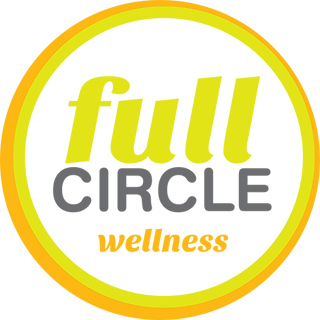Breast Cancer and Exercise
What is Breast Cancer and How Does it Affect the Body?
Breast cancer develops when breast tissue cells grow abnormally, multiplying faster than healthy cells. This progresses into a lump or growth that has the potential to metastasise (spread from the initial cancer site) to other regions of the breast tissue, lymph nodes, or other parts of the body. It is important to point out that, while breast cancer is commonly regarded as a "women's disease," it affects approximately 200 Australian males each year, with the number expected to rise gradually as our population ages.
An individual’s treatment for breast cancer may consist of 1 or more of the following:
Surgery: single or double mastectomy where surgeons may remove surrounding lymph nodes too
Chemotherapy: drugs that slow and/or kill the growth of cancer cells
Radiation therapy: controlled doses of radiation to damage and/or kill cancer cells so they cannot replicate and grow
Hormone therapy: slows or blocks the release of oestrogen (a hormone that stimulates the spread of breast cancer)
Benefits of Exercise and Breast Cancer
Most medical therapies carry the potential for adverse reactions, some of which may be just as debilitating as the illness itself. Fatigue, cognitive decline (commonly referred to as "chemo-fog"), cardiotoxicity, immunosuppression, and deterioration of mental health are all frequently reported adverse effects of treating cancer. Exercise interventions have been proven to positively influence the commonly associated adverse effects of cancer treatments.
Exercise enhances the effectiveness of cancer treatment and minimises it’s side effects. Regardless of the stage or form of cancer, exercise improves the body’s reaction to the treatment being received and has been shown to reduce fatigue caused by treatment. Regular exercise ensures a person maintains their cardiovascular and respiratory health, as well as physical aptitude and stamina. Regular exercise releases “happy chemicals” in the body called endorphins that are known to reduce feelings of anxiety and depression and improve the overall quality of life of the person.
As exercise physiologists, is it our job to cater to our client’s needs and conditions and adjust their exercise programs accordingly. Depending on the treatment you receive, will determine the types of exercises given to you to suit your needs.
If you are experiencing adverse effects from breast cancer treatments, it is critical that you exercise safely. Depending on the particular adverse effects you experience will determine what you may need to modify your exercise program. Cable machines, for example, may be better to use than hand weights if your treatment is affecting the nerves in your hands. If treatment has resulted in bone loss, enquire about activities that will strengthen your bones to reduce the risk of falling. If there were any lymph nodes removed, talk to your exercise physiologist about specific ranges of motion to avoid for a while, until the initial healing phase is over and the surgery site is safer to move.
How should I begin exercise?
The most important thing to remember is to start slowly even if you were physically active before cancer treatment. Build up your level of activity first to gauge how much your body can tolerate avoiding pushing yourself into exercise-related fatigue. This can help you avoid injury and most importantly stop you from becoming discouraged. Listen to your body – if your energy level is low or you feel quite fatigued that day, adjust your workout’s intensity or duration.
Cancer can make your body’s immune system very weak, exercising in a clean and sanitised environment is critical to staying safe. Avoid large gyms where germs spread rapidly and there can be a lot of people. Instead, swap it out for exercising at home or exercising outside if the weather is nice.
Stay hydrated and eat a balanced diet. Drinking adequate amounts of water during the day and especially during exercise is essential to avoid becoming dehydrated. Eating a balanced diet, especially foods high in protein, will aid the body in recovery post-exercise.
Discover the transformative power of exercise in managing breast cancer treatments with Full Circle Wellness. As accredited exercise physiologists, we understand the unique challenges faced by those undergoing cancer treatments. Our tailored exercise programs are designed to enhance treatment effectiveness, reduce fatigue, and improve overall mental health and quality of life. Learn how the right exercise can make a significant difference in your cancer journey, and why it's essential to start slowly and listen to your body. Our clean, safe, and personalised exercise environments offer the perfect setting for your wellness journey, or we can come to your home. Why not take the first step towards a healthier, more empowered you by scheduling an appointment with us today.
References
Breast cancer and oestrogen. (2012). Vic.gov.au. https://www.betterhealth.vic.gov.au/health/conditionsandtreatments/breast-cancer-and-oestrogen
Breast cancer in men | Causes, Symptoms & Treatments. (n.d.). Www.cancer.org.au. https://www.cancer.org.au/cancer-information/types-of-cancer/breast-cancer-in-men
Cancer Council. (2020). Breast cancer. Www.cancer.org.au; Cancer Council. https://www.cancer.org.au/cancer-information/types-of-cancer/breast-cancer
COSA. (2018). COSA POSITION STATEMENT ON EXERCISE IN CANCER CARE. Clinical Oncology Society of Australia.
Wirtz, P., & Baumann, F. T. (2018). Physical Activity, Exercise and Breast Cancer - What Is the Evidence for Rehabilitation, Aftercare, and Survival? A Review. Breast Care, 13(2), 93–101. https://doi.org/10.1159/000488717


